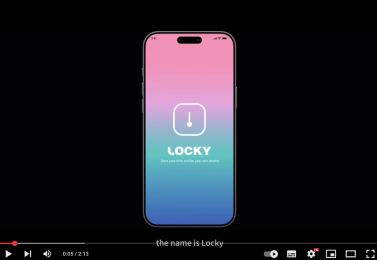
MobileLock Application
deveoped aIODLedo0lcetlon02pnoedouusade habits,Throudh use「e号e合10h,Coniaetteatsolution with three core functions: recording, locking, and planning.smart notificationmanacement andfocus mode settings analvsis,and field interviews. desiqned Using a minimalist modern design style, the app helps users improve work efficiency and rebalance their digital life through
USP
This is just a lock that can lock your phone
Brief

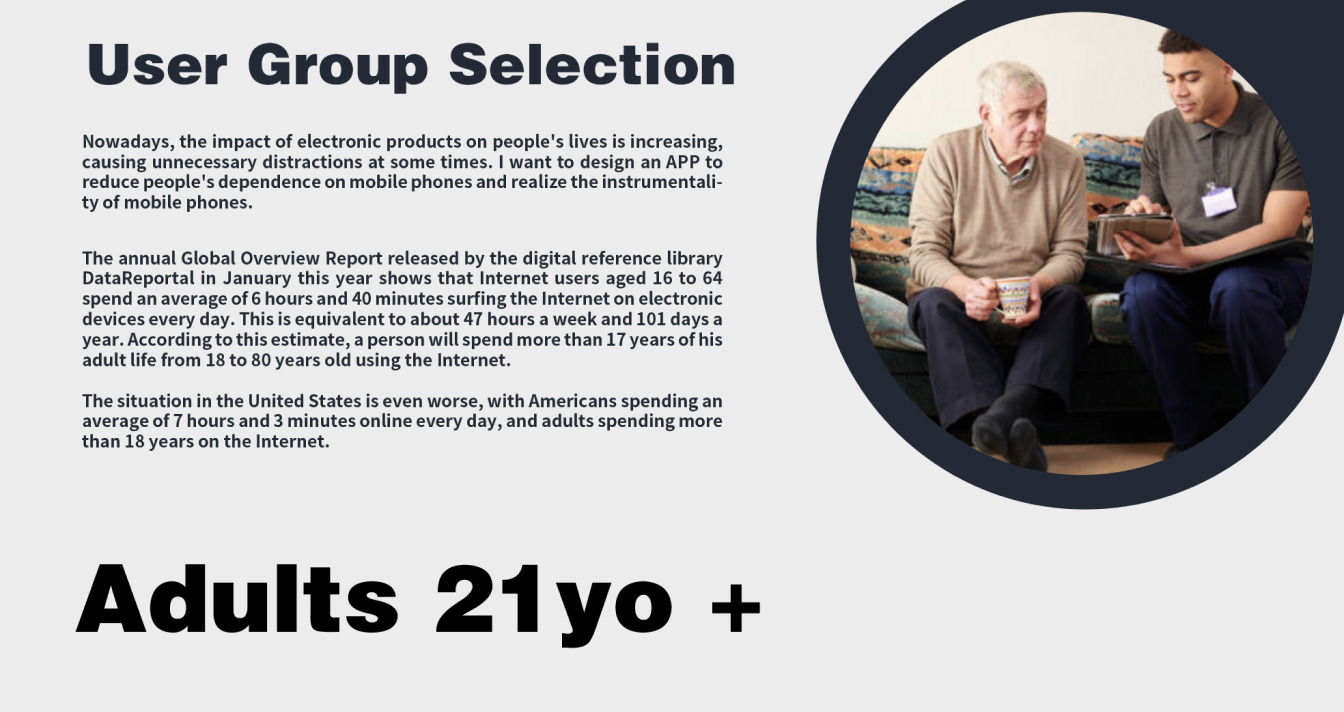
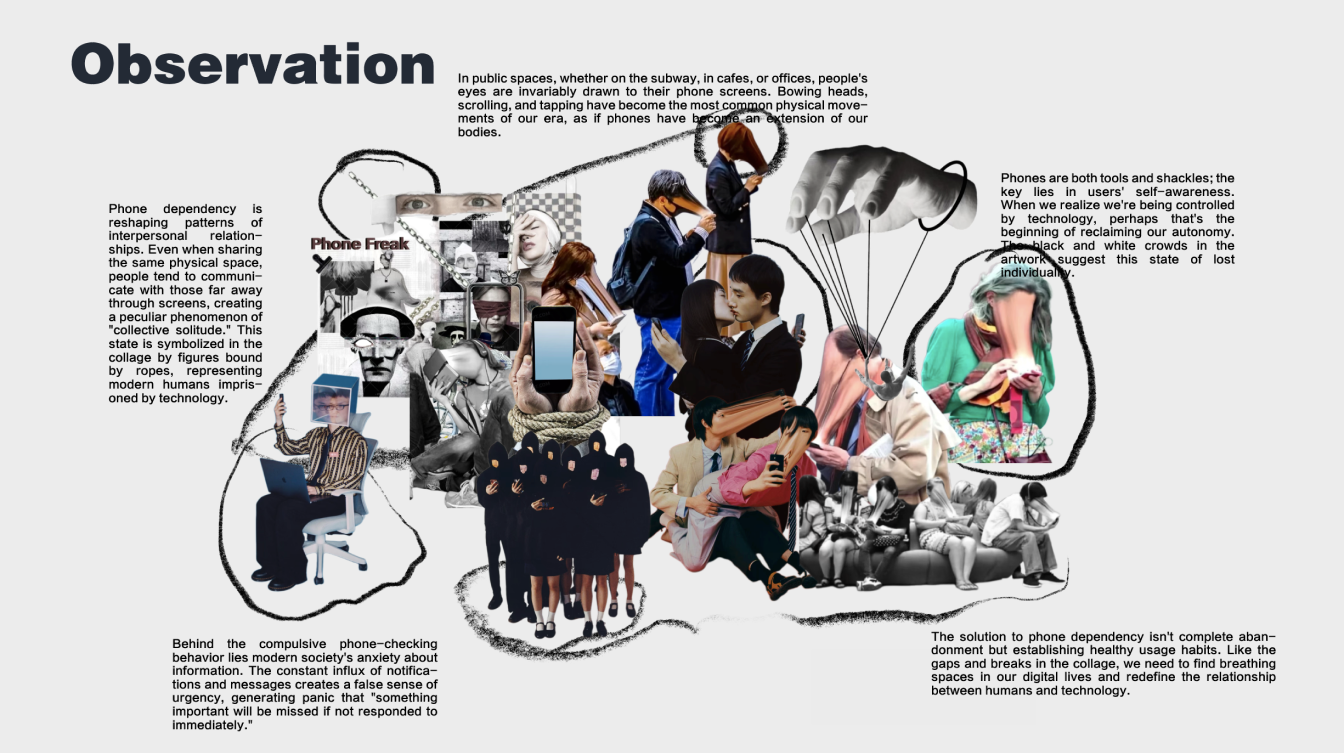
chose young people over 21 years old as thetarget user qrouo. report released by DataReportal hIS cholce ls based on several Key data Suoport: Accordlng to the cloba overVleW Internet users aged 16-64 spend an average of 6 hours and 40 minutes a day using electronic devices, 47 hours a week. and 101 days a year. What is more worrying is that in the United States,this number even reaches 73 hours a day. This means that rom the age of18 to 80, more than t7 years wilbe spent onthe intemet. These data highight that our targel group faces a serious problem of mobile phone dependence.
Through field observations, we found several important phenomena:
an otice.oeoplEattention is tirmly attracted by the moblle phone screeni1e oleomieloleierlS3SUOWW:30he socialphenomenon ofdespite peting in the same space, people tend to communicate with the distance through the screeinxious use behavior-people show anxiety about information,. and the compulsive behavior ot constantly checking thelr phones relects the panic of "osing important informationhe dualitv of tools ano shackles-mobie phones are both convenient tools and spiritual shackles for people's freedom.
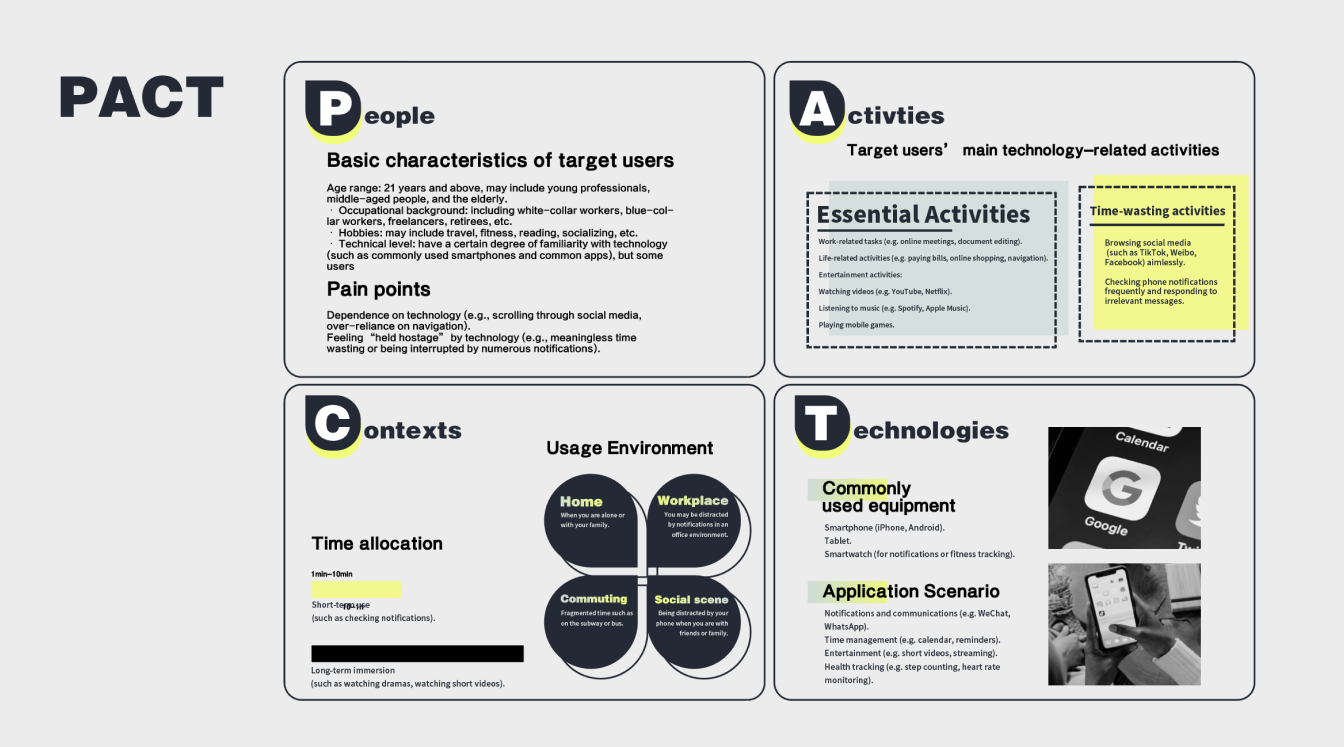
Through the PACT analysis framework, I comprehensively examined the key elements of the project: focusing on adults aged 21 and above with basic technological literacy (People), studying both their essential and non-essential phone usage behaviors in work and life (Activities), observing their usage habits and time allocation patterns across different environments such as home and workplace (Contexts), and their use of smart devices and application scenarios (Technologies). This analysis helped us gain a deeper understanding of user needs and usage scenarios, providing clear direction for subsequent application design.
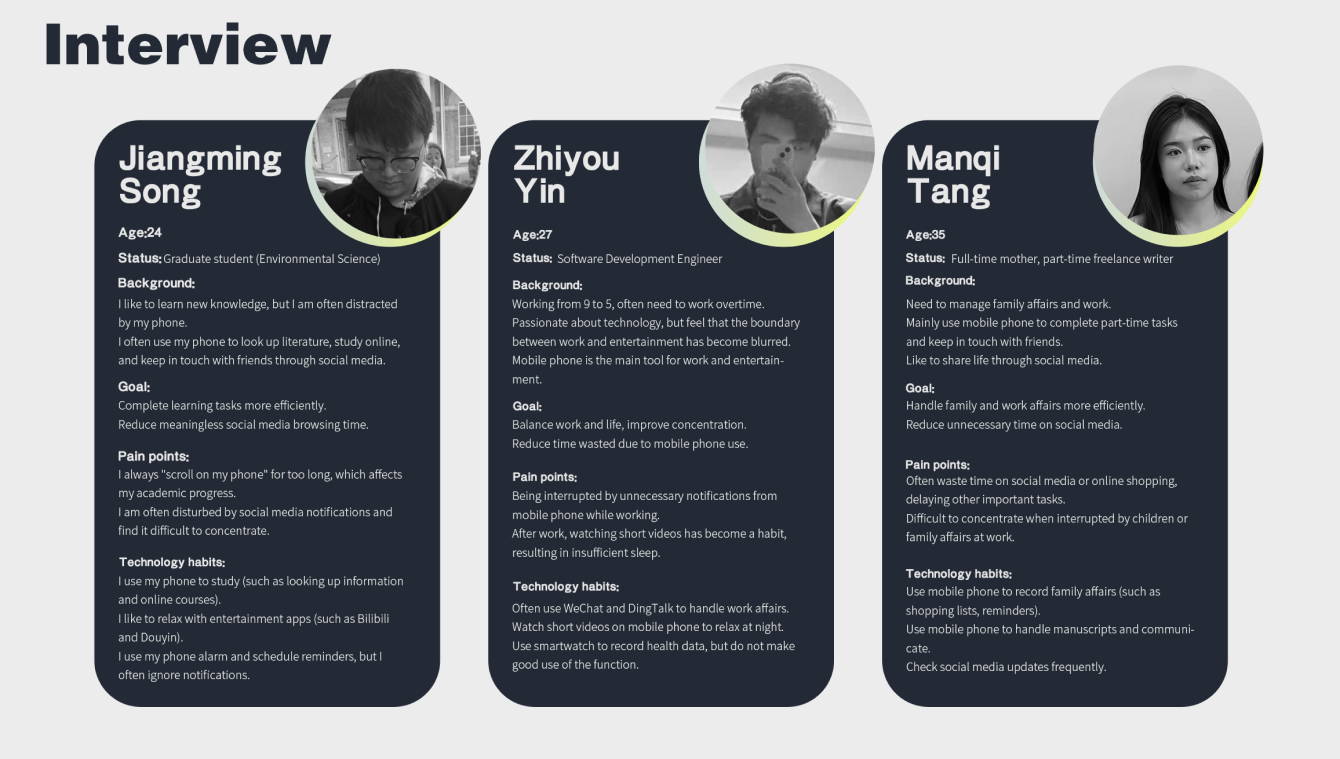
To gain deeper insights into different user groups' needs, I interviewed three representative users: a graduate student (Jiangming Song, 24), a software development engineer (Zhiyou Yin, 27), and a full-time mother/freelance writer (Manqi Tang, 35). Despite their different occupations and life scenarios, the interviews revealed similar challenges: blurred boundaries between work and entertainment, excessive social media use, and concentration issues due to notifications. They all expressed needs for improving efficiency and establishing healthy phone usage habits, providing valuable first-hand insights for our application design.
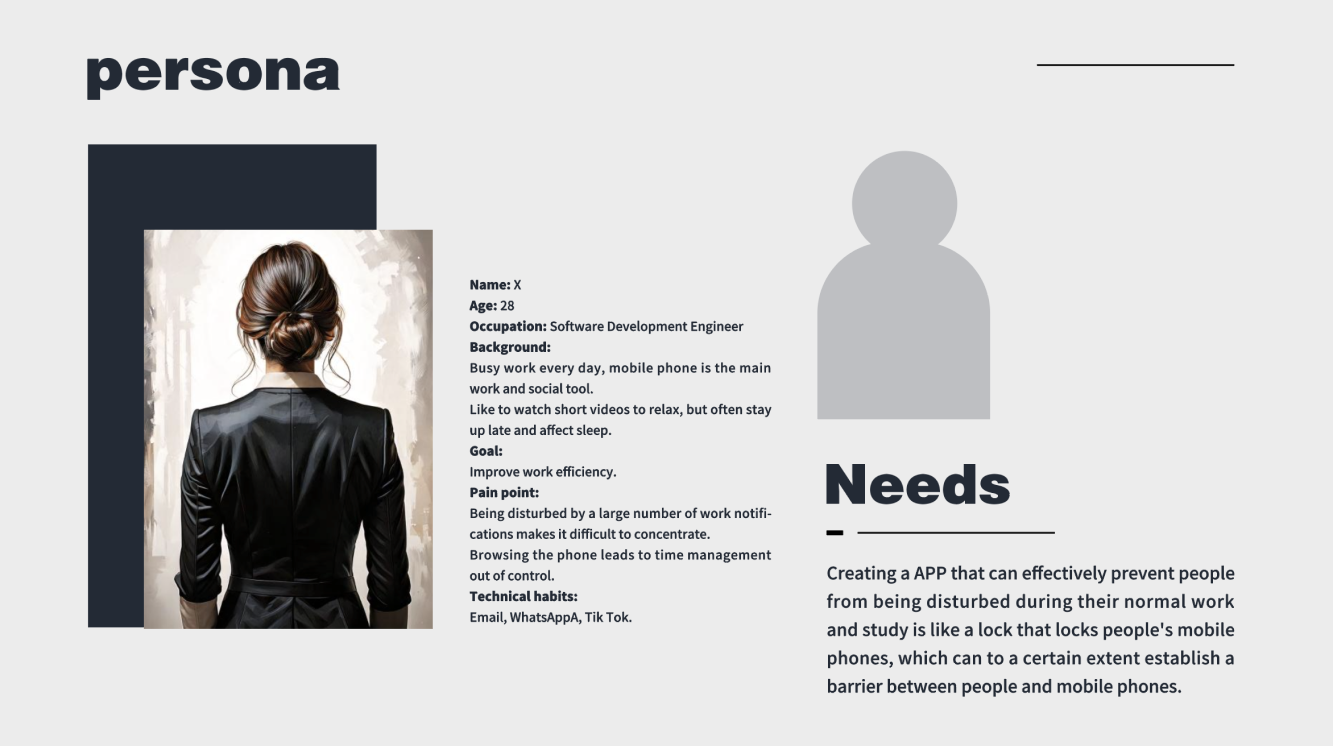
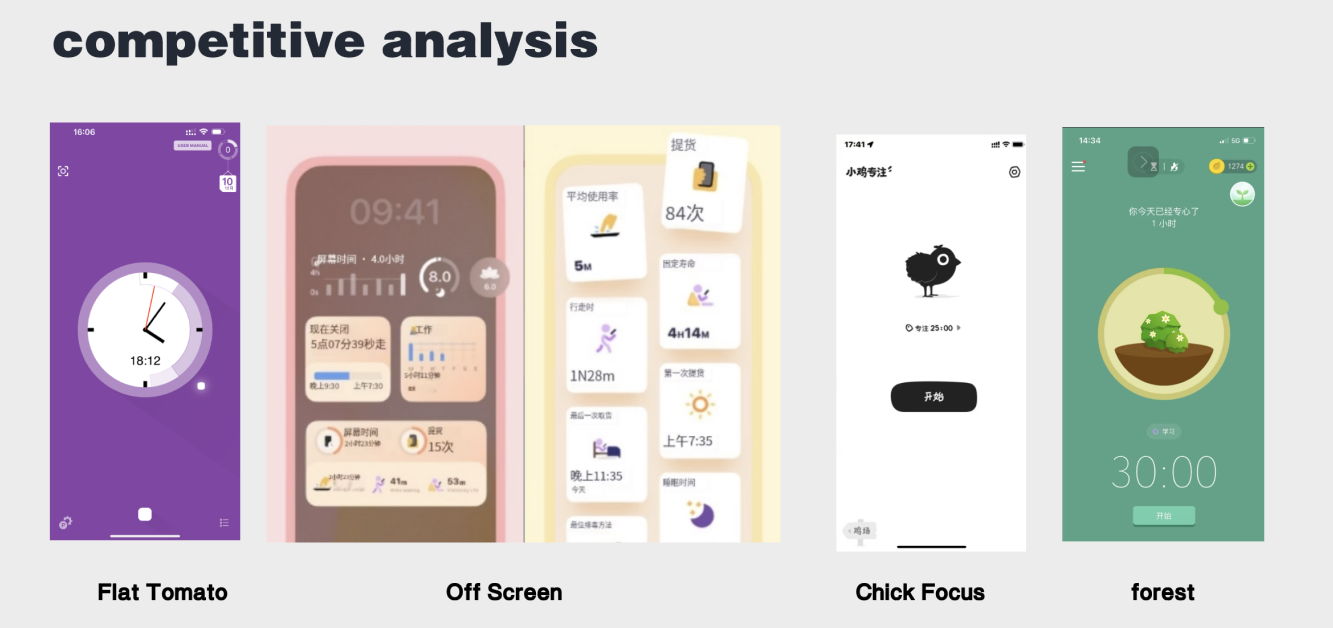
Based on our research, I created a representative persona: X, a 28-year-old software engineer. Her phone serves as both a primary work and social tool in her busy daily life. While she enjoys short videos for relaxation, this often leads to late nights and affected sleep. Her main pain points are work notification disruptions and time management difficulties, with a goal to improve work efficiency. This persona clearly defined our app development needs: creating an application that effectively prevents work and study disruptions by establishing a reasonable barrier between users and their phones.
In competitive analysis, we examined four major competitors in the market:
- Flat Tomato: A Pomodoro timer focusing on time management
- Off Screen: A screen time management tool with detailed usage analytics
- Chick Focus: A focus app with playful design
- Forest: A gamified focus app that motivates users through tree planting
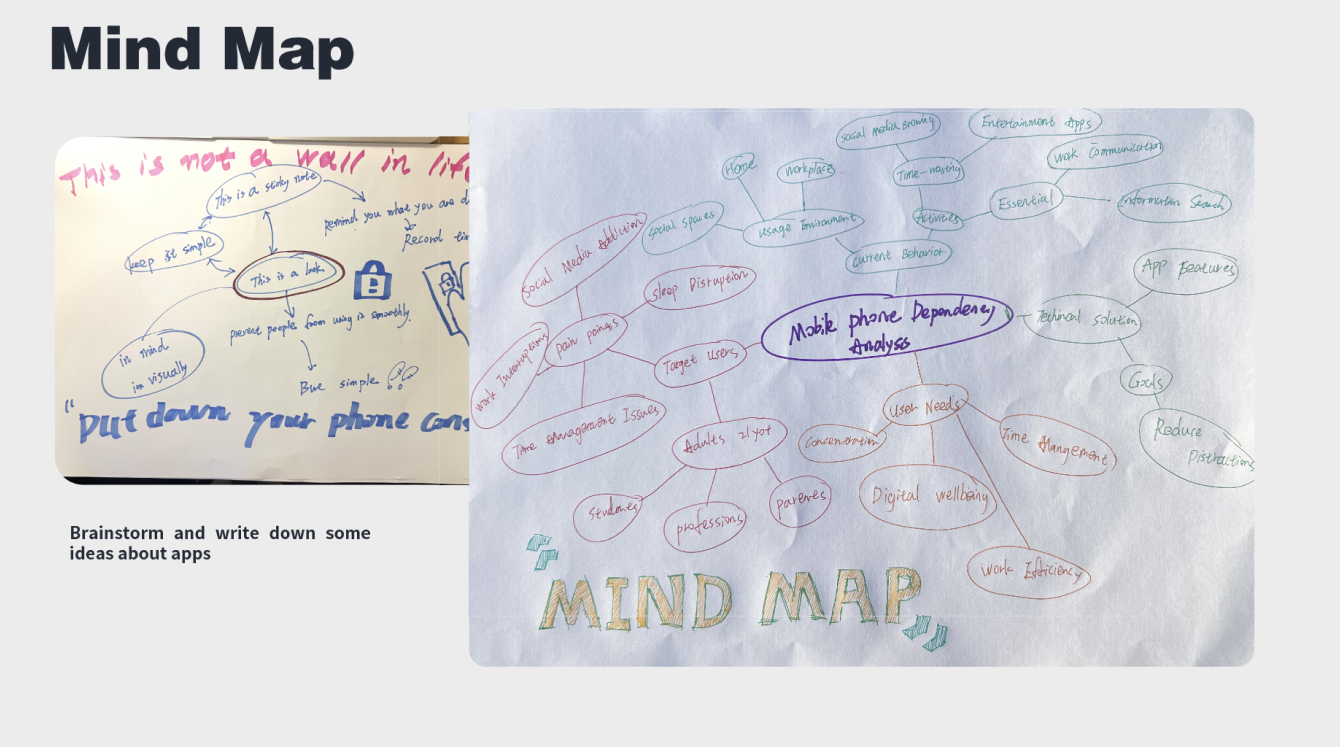
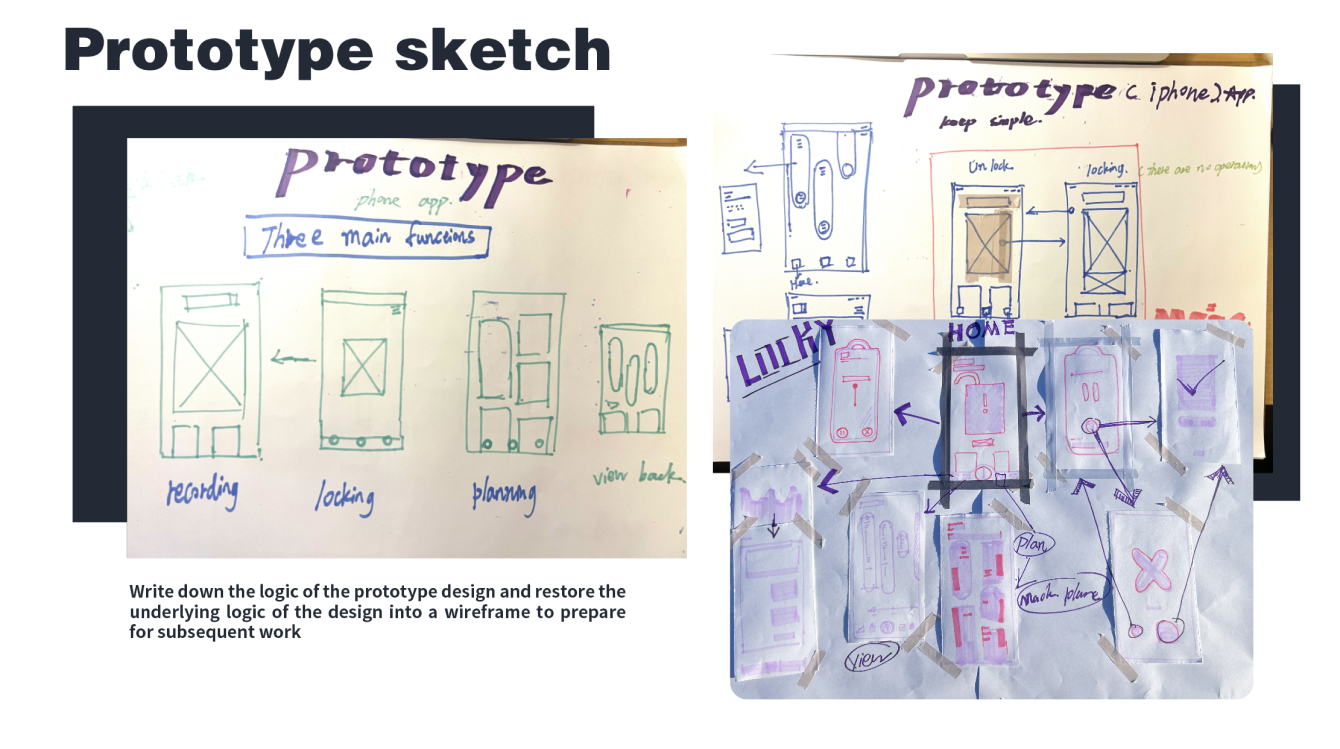
Based on our in-depth research, we advanced the project development through two key steps:
First, I created a mind map centered on "Mobile Phone Dependency Analysis," systematically organizing user needs, usage scenarios, and solutions. This mind map helped us clarify the project's direction, including user personas, behavior patterns, digital wellbeing, and work efficiency.
Then, I moved into the prototype phase, sketching initial wireframes. The prototype design focused on three core functions: recording, locking, and planning. Through hand-drawn sketches, we explored different interface layouts and interaction flows, laying the foundation for detailed design. These sketches helped us transform abstract ideas into concrete design solutions.
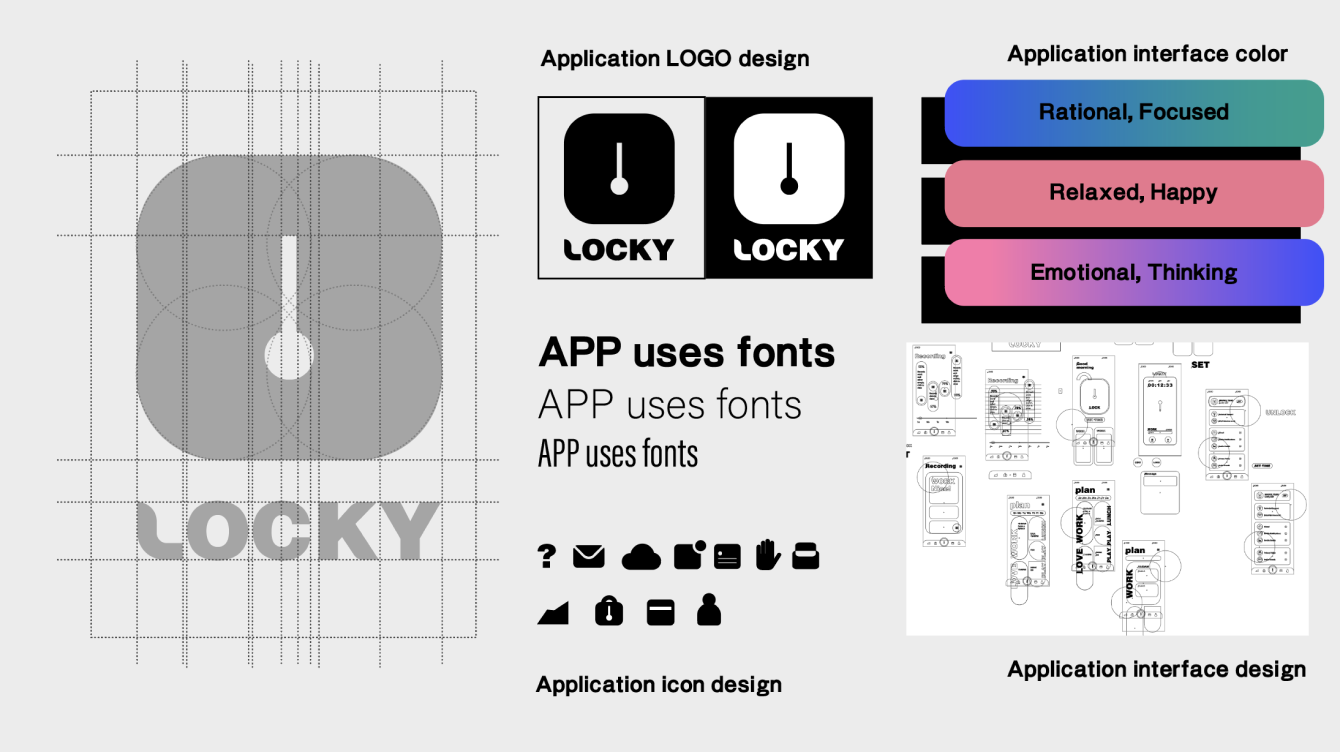
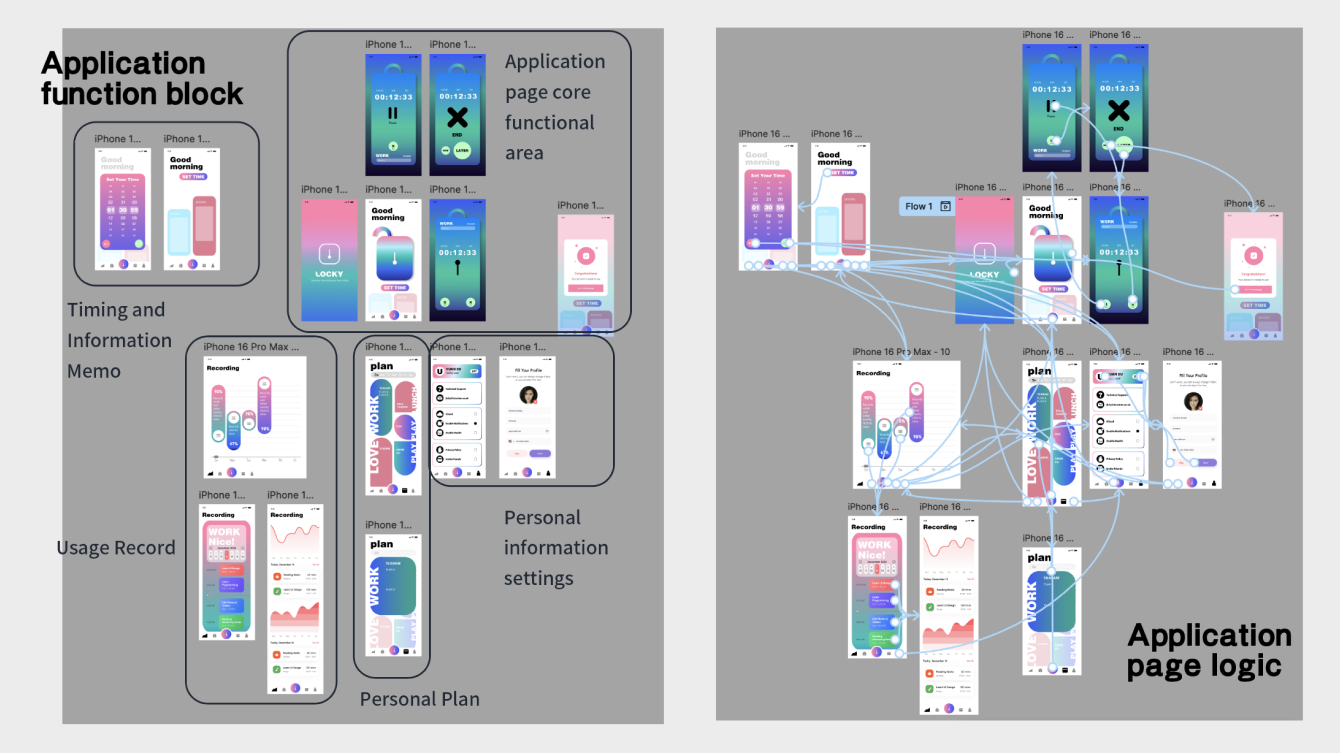
After completing initial research and prototyping, I moved into detailed visual design. The application, named "LOCKY", adopts a minimalist modern aesthetic:
The brand identity system includes:
- Logo design: Using a simple lock image as the core visual element
- Color system: Combining blue (rational focus), pink (relaxed happiness), and green (emotional thinking)
- Typography and icons: Modern minimalist fonts with simple functional icons
- Timing and information memo
- Usage record tracking
- Personal plan management
- Core functional area
- Personal information settings
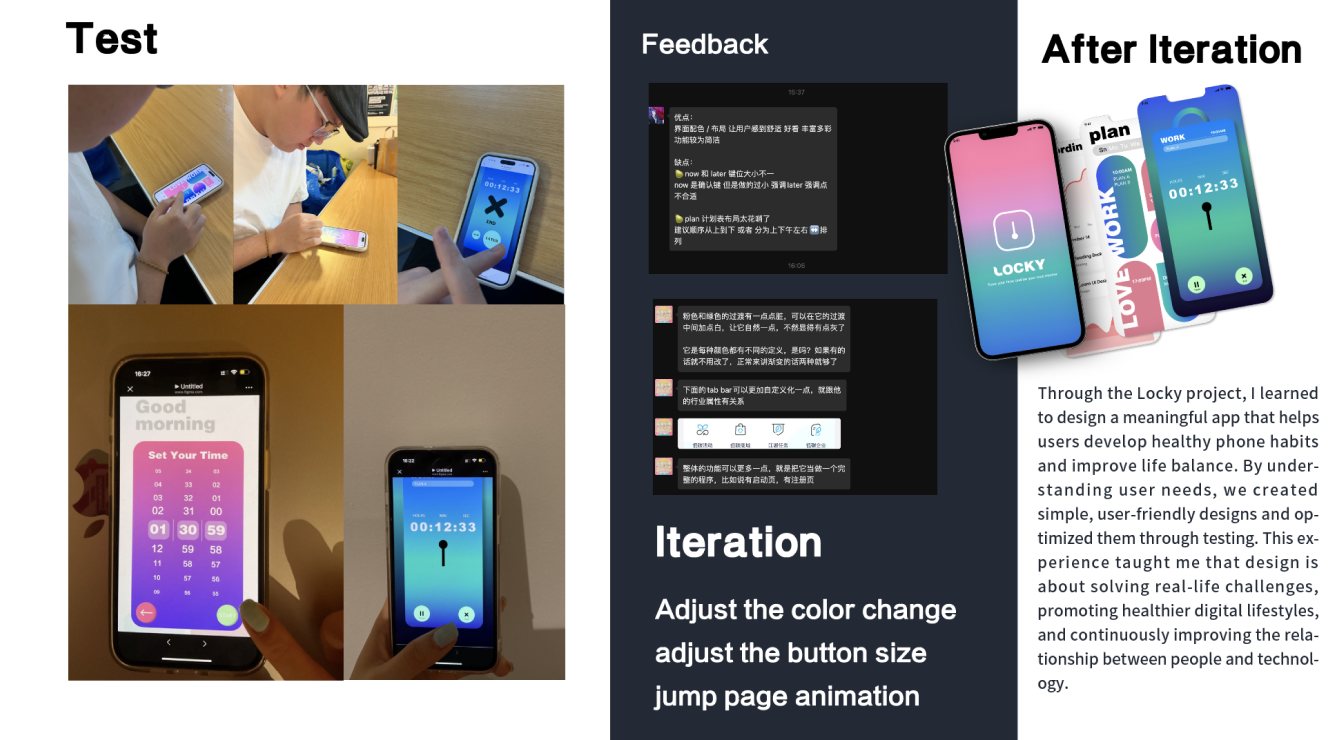
In the final phase of the project, I conducted comprehensive user testing and optimization:
During the testing phase, I invited target users to experience the app's core functions, including time setting and focus mode. Through observing actual usage and immediate feedback, I collected valuable first-hand user experience data.
Based on the feedback, I identified three main areas for iteration:
- Optimizing color transitions for better visual experience
- Adjusting button sizes for improved interaction
- Enhancing page transition animations for smoother navigation
